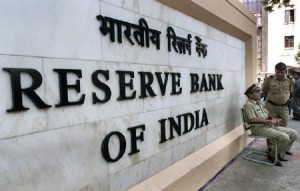The main components under the Monetary Policy followed by the RBI are:
- CRR- CRR or Cash Reserve Ratio. Under this policy, all scheduled commercial banks have to maintain a certain percentage of their total bank deposits as CRR. This amount of money has to be maintained in a current a/c with the RBI. This reserve is not kept by the bank but is maintained by the bank with the RBI. There is no upper or lower limit in the CRR ratio to be deiced by the RBI. The main aim of using CRR is to drain the excess liquidity out of the System. The present CRR is 4%.
- SLR- SLR or Statutory Liquidity Ratio. Under this, all scheduled commercial banks have to maintain a certain percentage of their total time and demand liabilities as SLR before giving credit to any customer. The upper limit on SLR is 40%. This reserve has to be maintained in the form of gold or any other government approved security. This reserve has to be kept with the bank itself. However, all the banks have to periodically declare their SLR reserves to the RBI. The present SLR is 22%.
- REPO RATE- This is an abbreviation for Repurchase Rate. This is the interest rate at which the RBI lends money to the bank in dire situations. This is now seen as the standard rate to be referred to, when trying to determine RBI’s future policies for the economy as this is now the standard rate with which RBI fights inflation. The present Repo rate is 8%.
- REVERSE REPO RATE- This is completely the opposite of REPO rate. This is the interest rate at which Banks lend to the RBI. The is used by the RBI to control the money supply. The present Reverse REPO rate is 7%.
- BANK RATE- This is also known as the Discount Rate. This is the rate at which the RBI lends money to the banks. Increase/Decrease in Bank rate affects the commercial banks lending rates which are then adjusted to this increase/decrease. The present Bank rate is 9%.
- MSF- MSF or Marginal Standing Facility. This was a new measure introduced by the RBI in 2011. Under this, the banks could borrow money from the RBI at this rate, as a last resort when the banks exhaust all other borrowing options. The MSF rate is always fixed 100 Basis point(BPS) above the REPO rate (1 BPS is equal to 0.01%). The present MSF rate is 9%.
Click here for government certification in Accounting, Banking & Finance





9 Comments. Leave new
Goos work!
RBI is responsible for everything that happens in the financial market. The methods mentioned above are quite efficient techniques as monetary policies. Not much people are aware of it and I’m glad reading such a technical post.
For the financial market and the role of RBI and Sebi are very important. They complement each other while the Government acts as their intermediary to the people.
technical post!
The concept is good and idea and knowledge which you gave is quite emphasizing. Looking forward to have some articles on this.
Good one..
Good One 😀 /
Great article!
very well articulated.. nice work